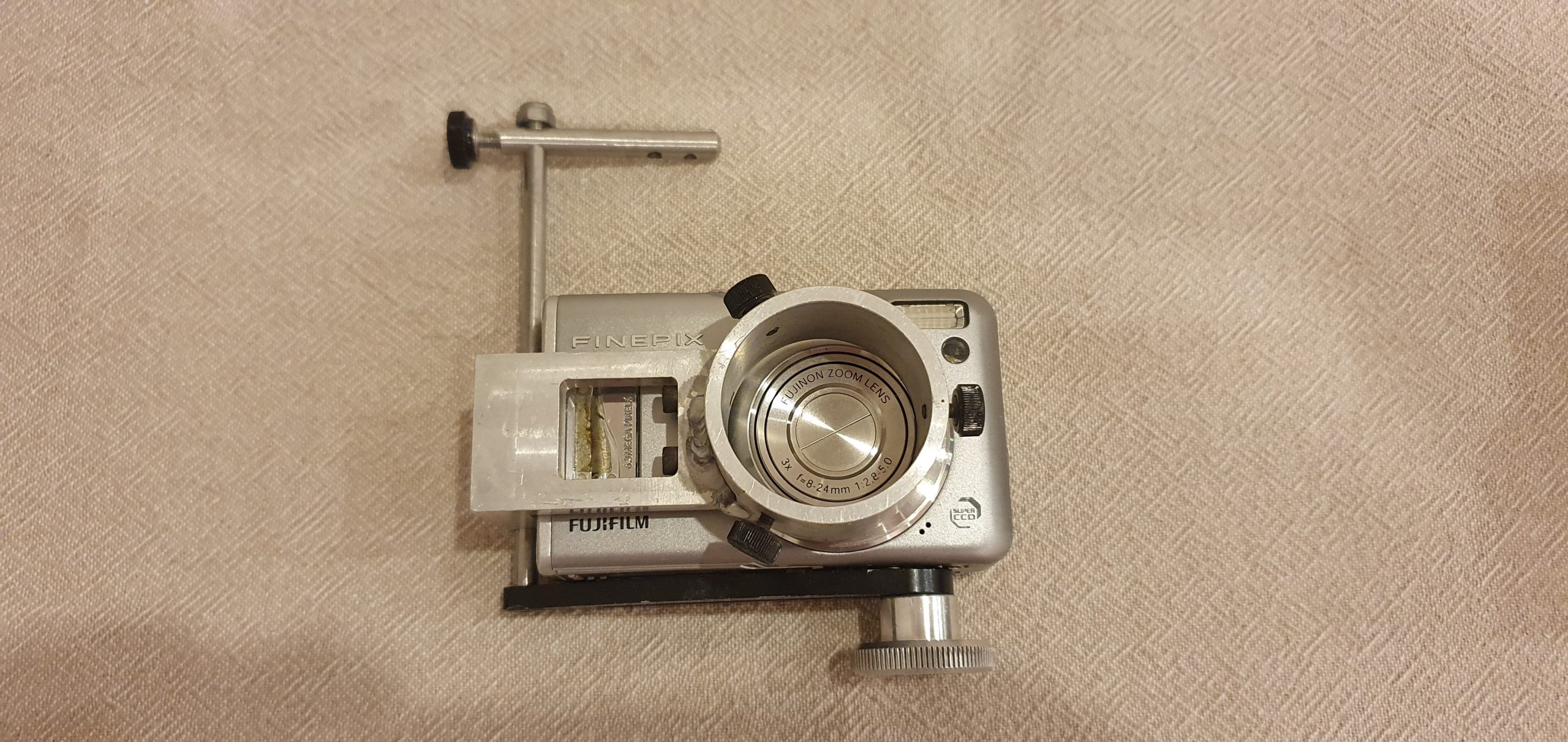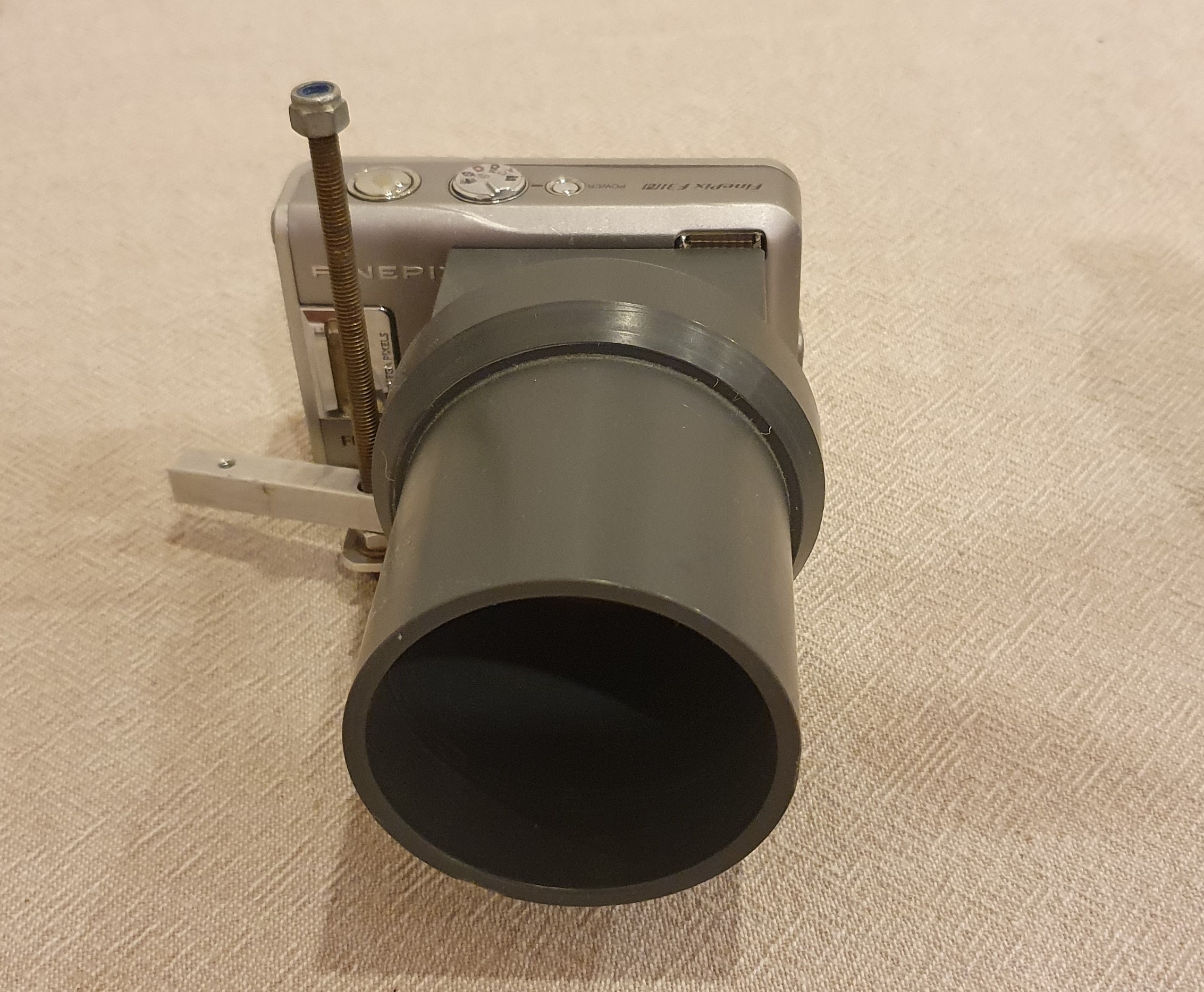I am first and foremost a birder, not photographer, even though I do take photos. Video comes a fairly distant third, but I have occasionally dabbled with taking video through the scope, initially because I worked out it can succeed when the light is too poor for stills, but more generally because there is something pretty special about how much better even crappy video can portray life and behaviour, evoking the moment and capturing the memory. If a mediocre photo is a record shot, I guess my short videos are record clips!
My first forays into digi-scoping were way back in 2000 — how scary is it that that is now more than 20 years ago (for Erica, that is quite literally a lifetime)!?. I copied Steve Young, who’d begun using a Nikon Coolpix 995 a year or two before me, and it was clear that the Nikon was the current pick of the bunch for digi-scoping — it had sufficient manual controls, decent resolution for its time, and a swivel body which meant you could angle the screen. It also had a filter thread on the front of its (non-extending) 4x zoom lens, so I sketched a simple tube design and enlisted the help of the Dept of Engineering Science workshops.
Here are a few stills taken with the combo of the Coolpix, adaptor and my Swarovski AT80 HD with 30W eyepiece. Pretty shite, huh?! (Clockwise from top left: Belted Kingfisher, Albany NY 2005; Dupont’s Lark, Hoces del Duraton, Spain, 2002; Spanish Imperial Eagle, near Monfrague, Spain, 2002; Coolpix 995; custom adaptor; Alpine Accentor, Aragon, 2002.






I used the Coolpix 995 for about 5 years, but it was large and cumbersome. In that time there was a lot of development of compact digital cameras, but not a lot that was especially helpful for digi-scoping. Finally in 2007 I switched to a better, more modern and compact package, the Fujifilm F31fd. The Fuji bucked the trend for its day and went with fewer bigger pixels to allow better low-light performance. This was good for photographers (and others like me who care about noise and light levels), but was not a wise commercial decision from Fuji since most consumers were only interested in how many megapixels each camera had (Fuji’s successors to the F30/F31 were actually inferior cameras for digi-scoping). This time I went even further with my design, arranging for it to be “swing out” so I could use the scope with the camera attached, then swivel it into position as soon as I needed it. I even arranged for a mast and boom so I could screw in a manual remote shutter release! Once again the guys in the workshop were very helpful in realising my design.

One feature of the Fuji that was lacking on the 995 was the ability to take video, and I discovered almost by accident that video in low light conditions can work pretty well – much better than stills. I stuck with this combo of Swaro + Fuji and custom swing-out for some time. My first video efforts were in Brazil, a trip ostensibly for ICCV 2017 in Rio de Janeiro, but ahead of which I managed two days at the wonderful Reserva Ecologica de Guapiacu (REGUA), at the time a relatively young regeneration project not yet firmly on the birding tourist trail. I took a bunch of videos in Brazil, and here is an example. This is a Black Jacobin, a SE Endemic, and my first South American hummingbird (I’d only ever seen Ruby-throated in upstate New York prior to this).
This combo also accompanied me to my first big dedicated foreign birding trip, Remote PNG in 2008, a 3-week trip to some of the least birded places in the world. I also purchased a DSLR ahead of that trip but shamefully it spent much of the time packed away in my rucksack and I failed to use it to its potential, missing several opportunities to get ideal images of some of the key species. At the time I was still relying on digi-scoping as my primary source of pics. I did manage some video of Raggiana Bird of Paradise and Brown-headed Paradise Kingfisher, among others. In contrast, another of the tour participants, Helmut, was a keen videographer, and had brought with him two camcorders. Sadly this was reduced to one, on a small island near Kavieng:
As we made our way back along the trails we reached a stream, and the locals leading the way jumped across with effortless, sure-footed grace. Helmut, next in line, approached the edge, sussed it out and then launched himself in a rather ungainly fashion across the narrow stream. His feet landed on the far side but then we watched as, in slow motion he began to topple helplessly backwards, arms flapping about for anything to grasp, the weight of his rucksack dragging him inexorably down until he landed on his back in the stream. Immediately the kids behind us erupted in laughter. Steve and I suppressed our own guffaws and then after a slightly-too-long pause, Steve was first to react and clambered down to help as Helmut still flailed about like an upturned tortoise. Fortunately the old chap was ok apart from his embarrassment, but the expensive camcorder in his rucksack fared less well. It was water-logged and completely ruined. He had brought a backup, but would now be using inferior equipment for all of the top targets of the trip.
Here are an example video highlight from that PNG trip:
Later that year I went back to Spain for work (as I was doing regularly during the 00s) and tried out the Fuji on Wallcreeper, perhaps Eurpope’s best bird?
One of the factors that you need to worry about when video-scoping at magnifications of 30x or more is the inevitable camera shake, especially if you need to touch the apparatus to pan or zoom or just to centre the subject, but at those magnifications even wind causes the image to bobble about. So I also started to experiment with post-processing using the excellent combination of VirtualDub and its Deshaker plugin to remove the inevitable shake that you get at 30x or more magnification, and it worked pretty well (see below).
By 2010 I was more comfortable with the DSLR as primary photo source, but I took the digi-videoing kit to Philippines anyway, and managed a few shots of birds too distant for the DSLR, and some nice video. Because I had changed the eyepiece from 30x to 20-60x I needed a new adaptor; this one I made in the workshop myself rather than relying on the technicians. My design here was problematic because the hard machined plastic actually weighed a lot. Simply placing the tube over the eyepiece would inevitably tip the scope up enough to pull the bird off centre and often out of the field of view. Lining it back up was the cause of much frustration.

Here’s one of the trip highlights, Silvery Kingfisher from PICOP. Video of another of the star birds, Philippine “Monkey-eating” Eagle, is blurry and distant, but somewhat atmospheric, and considerably better than any stills I managed (though inferior to the best views we had through “naked” optics).
Later in 2010 I had a work trip to New Zealand and ingeniously arranged for a 2 day stopover in Bangkok on the way home. I was after this guy: Spoon-billed Sandpiper, one the most endangered, unusual and charismatic waders on the planet. A few overwinter in the Gulf of Thailand and as you can see below, I was successful in finding one!
This is the first of many waders. I had not consciously sought to video waders, but on reflection perhaps the reason is that they are often hard to get close to, and so often viewed through the scope rather than just bins.
The following year, 2011, I travelled to Colorado Springs for CVPR. I week or two earlier I had upgraded my digi-scoping camera to the Coolpix P300. The Fuji had served me very well, but had acquired some nasty dust-bunnies which are particularly obvious when the view is later stabilised, since they dance around in the video. The Coolpix 300 was not so different in terms of form factor and functionality, but it was new so had no dust-bunnies, and it was newer tech meaning more megapixels, etc. The big difference, however, was the ability to take HD video, which I imagined could be a game-changer; not only getting video, but capturing at a resolution that might allow reasonable stills to be cropped from the video.
For the P300 I fashioned my cheapest, quickest and dirtiest — but still very effective — adaptor. I found a plastic tube of the right diameter, and bent a piece of metal to the right shape so I could screw the adaptor into the tripod mount. Genius! Once attached to the camera you just slide the tube over the eyepiece to line up the optics.

I used this adaptor and camera for a number of videos on conference trips and on a couple of dedicated birding trips to Venezuela and Morocco — I discovered writing this blog that, for example, I’d videoed a cracking Bearded Bellbird and completely forgotten about it.
By around 2012 DSLR photography had well and truly taken over as my prime means of capturing images, and once we moved to Australia I became much more focused on the DSLR to the point that I rarely carried the scope with me into the bush. When I got a high-end point-and-shoot (Sony RX100) for some lab work in 2013 I borrowed it for some digi-scoping, designing a 3D-printable adaptor using FreeCAD.

One of those trips was ICCV 2015 in Chile. Here’s a highlight from that trip.
From around 2015 onwards the quality of phone cameras was fast approaching that of point-and-shoots and the market for the latter had fallen away completely. My first higher-end smart phone was an iPhone 5, but the video on that wasn’t great. In 2017 upgraded the iPhone to a Samsung S6 and had my first stab at digi-video. Once again FreeCAD was very useful; I grabbed a phone-case design from the web and added a simple ring to help align the camera with the eyepiece.

Using this I captured one or two worthwhile vids and images, but my adaptor design wasn’t great and I didn’t put time into refining it because I got so little use. Here’s an example — this time without stabilisation post-processing — from a local twitch to see some (increasingly) rare Australian Painted Snipe.
A year later I was in West Papua, gunning for the “Full Attenborough”. Most of the video I took there was using the DSLR on my tripod because the tripod mount of my scope got damaged in transit, but I did manage one or two mediocre efforts using the S6. Here is a King BoP from Nimbokrang — we were viewing almost directly over our heads!
About a year ago I upgraded my phone again, this time to a Samsung 10e, and recently I decided to have another go at the phone-case idea. Here is the result of my efforts. The ring is a little bit deeper and fits snugly over the rubber eye-cup of the scope so that it is held in place hands-free. Turns out I can give voice-commands to the phone to take a photo or video (eg “Cheese” or “Start video”).


Here are some initial results from my latest foray into video-scoping:

